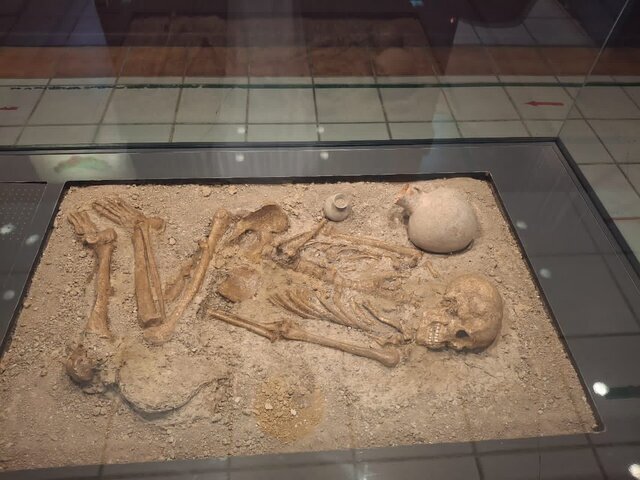3,200-year-old Iron Age woman's skeleton discovered in northern Iran

TEHRAN – A team of archaeologists has uncovered the 3,200-year-old skeleton of a woman in a rural district in northern Iran.
The Iron Age skeleton was unearthed near the village of Kami-Kola, which is located in the Shahne-Posht area of Babol county, Mazandaran province.
The discovery, described as one of the most significant in the region in recent years, has been transferred to the Babol Museum for preservation and further study.
Hassan Fazeli Nashli, Associate Professor of Archaeology at the University of Tehran, announced the discovery, noting that it emerged during a multi-year excavation project conducted between 2018 and 2020. The archaeological team focused their work on two key sites – Qaleh Bon and Shahne-Posht–where they uncovered 16 burial trenches as part of their research into Iron Age funerary practices.
“This cemetery is among the richest Iron Age burial sites in Iran,” Professor Fazeli Nashli said in an interview with ISNA. “Its scale and density of findings are almost unparalleled in northern Iran.”
In total, the excavation yielded 61 human skeletons, of which 31 were found during scientific excavations, while the remaining were recovered from areas previously looted during illegal diggings. Most of the remains, according to Fazeli Nashli, date back to the Iron Age.
He emphasized the historical significance of the Shahne-Posht site, which has been subject to looting since the mid-2000s. Many graves and ancient artifacts–some more than 3,000 years old–have been lost to unauthorized excavations.
The northern section of Mazandaran province consists of a lowland alongside the Caspian Sea and an upland along the northern slopes of the Alborz Mountains. Marshy backlands dominate the coastal plain, and extensive gravel fans fringe the mountains. The climate is permanently subtropical and humid, with very hot summers.
The highland slopes rise abruptly in the west and more gently in the east. Forests have been largely destroyed; the higher parts are cultivated summer pasture studded with villages partly deserted in winter. Wild boar, deer, and birds are numerous; the tiger, formerly found in the lowland, has disappeared. Cattle are usually humped; the buffalo is widely used as a draft animal. There are many rivers as well.
AM
Leave a Comment